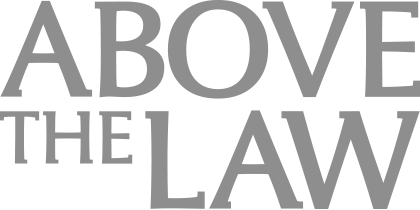Correct Placement Of Punctuation In Relation To Quotation Marks
Bryan A. Garner of LawProse explains where to properly place punctuation in relation to quotation marks.
A common grammatical concern is how to punctuate around a quotation correctly. Does a semicolon go inside or outside the closing quotation mark? What about a question mark? What if the quotation itself is a question? And what if you have nested quotations? Here are some guidelines:
1. Period and comma. Always place periods and commas inside the closing quotation mark, including any nested ones. This is the traditional American style. (In British English, the style is generally to place periods and commas outside the quotation marks. But there are many exceptions.)
Ex.: The sign said, “No motor vehicles.”

Tackling Deposition Anxiety: How AI Is Changing The Way Lawyers Do Depositions
Ex.: Only positive adjectives, such as “reliable,” “kind,” and “trustworthy,” were used to describe the plaintiff.
Ex.: The officer said, “My partner told Mr. Taylor, ‘Please get in the car.’”
Ex.: “State law will be preempted when Congress intends federal law to ‘occupy the field,’” stated the Crosby opinion.
Ex. (with a possessive): Linda’s son told her, “I’ll be working at the Joneses’.”
Sponsored

Legal Contract Review in Under 10 Minutes? Here’s How

Tackling Deposition Anxiety: How AI Is Changing The Way Lawyers Do Depositions

Data Privacy And Security With Gen AI Models

Legal Contract Review in Under 10 Minutes? Here’s How
2. Semicolon and colon. Place final semicolons and colons outside the quotation mark, even if the quoted material happens to have a semicolon or colon in that position.
Ex.: The author’s rough draft correctly used “affect”; the final draft was wrong.
Ex.: Our lease listed three people under the section titled “Parties”: (1) Stephen Malloy, (2) Belinda Malloy, and (3) Kaleigh Malloy.
3. Question mark and exclamation point. A question mark or exclamation point may go inside or outside the quotation mark, depending on whether it’s part of the original quotation. If it is, as in the second and fourth examples, place it inside; otherwise, leave it outside.
Ex.: Did the victim “suffer an economic loss as a result of a crime”? (The question mark goes on the outside because this asks a question about a statement.)
Ex.: The attorney asked the witness, “Did you see the defendant hit her?” (The question mark goes on the inside because this makes a statement about a question.)
Sponsored

Curbing Client And Talent Loss With Productivity Tech

How Thomson Reuters Supercharged CoCounsel With Gen AI Advances

Ex.: It’s snowing, but the meteorologist this morning forecast “a warm and sunny day”! (The exclamation point goes on the outside because the whole sentence is an exclamation.)
Ex.: She yelled, “Fire!” (The exclamation point goes on the inside because this makes a statement about an exclamation.)
If the sentence and the quoted material end in the same punctuation mark, use only one mark and place it inside the quotation mark.
Ex.: Have you seen Professor Garner’s lesson titled “Is the correct past tense pleaded or pled?” (This asks a question about a question.)
So now you’ll be able to exclaim “Yes!” if someone asks you, “Do you know the correct way to punctuate around quotation marks?”
For more detailed discussion, see:
The Redbook: A Manual on Legal Style § 1.31, at 24-25 (3d ed. 2013).
The Chicago Manual of Style §§ 6.9-6.10, at 309-10 (16th ed. 2010).
William A. Sabin, The Gregg Reference Manual 70-72 (10th ed. 2005).
Thanks to J. Alan Holman, Christopher B. Nelson, and Mark F. Saker for suggesting this topic.
Bryan A. Garner, President of LawProse Inc., is the most prolific CLE presenter in the U.S., having trained more than 150,000 lawyers and judges. His book — most prominently Black’s Law Dictionary and Garner’s Modern American Usage — have been cited as authority by every state and federal appellate court, including the highest. For more about him, go to www.lawprose.org. To follow him on Twitter: @bryanagarner.







